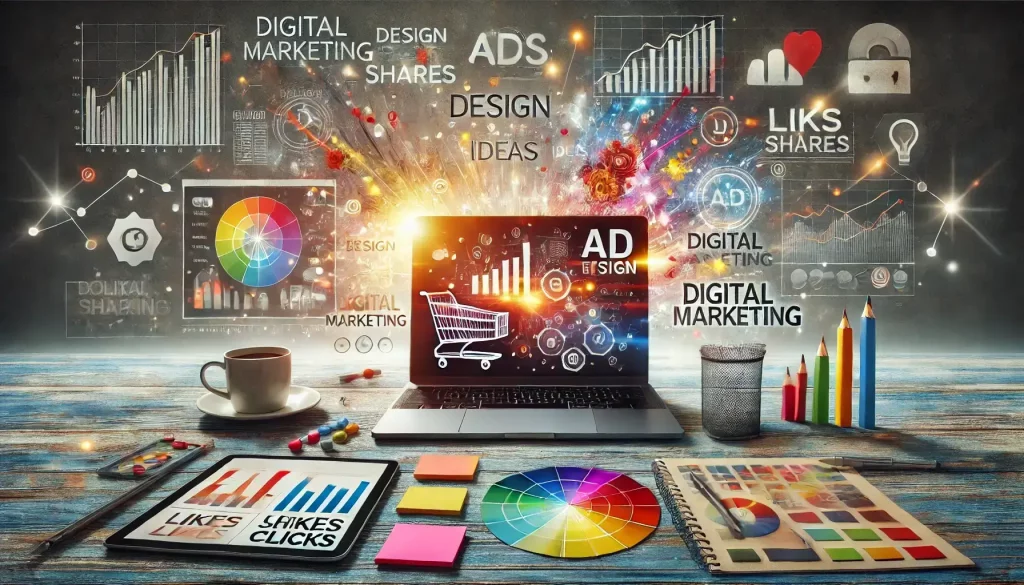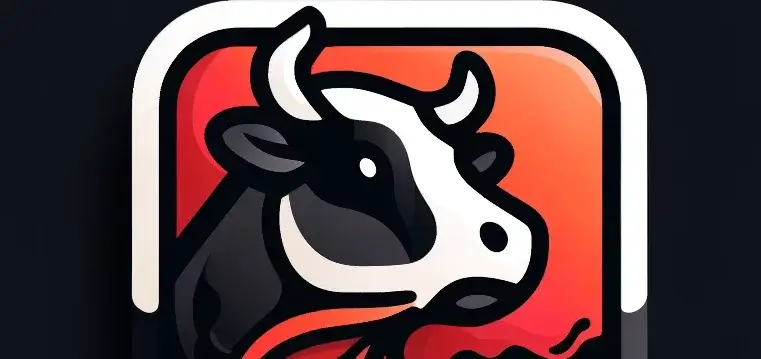Digital advertising design isn’t what it used to be. Gone are the days of static images slapped onto a display ad or uninspiring banner layouts hastily put together. Thanks to advancements in technology, digital advertising design has evolved into a dynamic space where creativity meets data-driven precision.
From AI-generated ads to new immersive formats, technology is shaping how we create and experience advertisements. For digital marketers, graphic designers, and advertisers, this isn’t just a trend—it’s the new normal.
If you’re ready to explore how technology is revolutionizing digital advertising design, keep reading. We’ll uncover the latest tools, trends, and strategies that are shaping the industry.

The Rise of AI-Generated Ads
Artificial Intelligence (AI) is no longer a buzzword; it’s a powerhouse driving innovation in advertising. AI generated ads are a prime example of how technology is transforming digital ad design.
What Are AI-Generated Ads?
AI-generated ads use algorithms to create ad copy, visuals, or even entire ad campaigns based on data inputs. These tools can analyze your audience, predict trends, and craft designs optimized for engagement.
Why This Matters:
- Speed: AI can produce ad concepts in minutes, cutting down on production time.
- Personalization: Hyper-tailored ads connect with niche audiences better than generic campaigns.
- Optimization: AI adapts content on the fly, tweaking elements in real-time for better results.
For instance, tools like Canva or Jasper AI can assist in creating dynamic ad visuals or grabbing attention with personalized ad copy. These aren’t just time-savers—they democratize creativity, opening the door for small businesses that may not have large in-house design teams.
Human Insight + Machines = Magic
One important note: while AI is great, it shouldn’t completely replace human creativity. Your expertise in understanding tone, emotion, and storytelling remains essential. The best campaigns usually combine automation with that irreplaceable human touch.
Immersive Formats Are Changing the Game
Digital advertising isn’t confined to 2D anymore. Immersive formats, enabled by AR (Augmented Reality) and VR (Virtual Reality), are offering audiences entirely new ways to interact with brands.
How AR and VR Are Shaping Ad Design
Imagine being able to “place” a piece of furniture in your living room before buying it. That’s exactly what AR advertising enables, and brands like IKEA are already acing this game. VR, on the other hand, transports users to entirely virtual worlds to experience brands in unprecedented ways—think virtual product launches or immersive storytelling.
What Makes Immersive Ads Powerful:
- Interactivity: Users feel more engaged when they can actively explore your product.
- Memorability: Immersive ads create unique experiences that stick with the audience longer.
- Brand Innovation: AR/VR ads position your brand as forward-thinking and tech-savvy.
For digital marketers, experimenting with these tools can elevate campaigns from conventional to cutting-edge.
Pro tip? Start simple. AR filters for social platforms like Instagram are an easy and affordable entry point.
Programmatic Design for Smarter Ads
Programmatic advertising—automated buying and selling of ad space—has been around for some time. But now, programmatic features are extending into ad design itself, optimizing visuals and layouts based on performance in real time.
Dynamic Creative Optimization (DCO)
This tech analyzes user data and automatically customizes ad elements, like headlines, colors, or call-to-actions. These ads “learn” which combination of elements works best and replicate them for better results.
For example, if a red button gets more clicks than a green one, the system identifies this and rolls out more red buttons. The result? Ads that perform better without you having to lift a finger (well, almost).
Benefits of DCO include:
- Higher ROI: Ads are more likely to convert because they’re tailored on the go.
- Efficient A/B Testing: Traditional A/B tests are slow compared to DCO’s lightning-fast iterations.
- Scalability: Perfect for larger campaigns where manually tweaking each ad is impractical.
Brands leveraging programmatic design should still keep branding consistent. Technology handles the mechanics, but clear branding ties everything together.
Collaboration Has Never Been Smoother
Collaboration is often a pain point in ad design—multiple teams, tools, and revisions can slow down the process. Luckily, technology has streamlined teamwork like never before.
- Cloud-based Design Platforms: Canva, Figma, and Adobe XD allow real-time collaboration across teams, big or small.
- Centralized Feedback Tools: Platforms like Trello or Slack integrate seamlessly for workflow management. No more 17 back-and-forth emails about a single font choice.
By collaborating more efficiently, creative teams can focus on ideation and execution rather than wasting time on logistical headaches.
Why Tech-Driven Ads Resonate with Today’s Audience
Modern consumers live in a tech-savvy world. They expect personalization, instant engagement, and aesthetically pleasing designs—everything that technology-powered advertising excels at delivering.
Consumer Expectations in 2024:
- Personalization: Targeted, tailored ads feel more genuine and relevant to users.
- Speed: Today’s audiences have short attention spans. If your ad doesn’t grab them in 2-3 seconds, they’re gone.
- Aesthetic Harmony: Poorly-designed ads feel outdated and untrustworthy. Clean, professional visuals are the name of the game.
And don’t forget mobile-first design! With most audiences engaging on mobile, optimizing for smaller screens is crucial.
How You Can Stay Ahead of the Curve
Staying competitive as a digital marketer or designer means leveraging these tech-driven tools and trends to your advantage. Here’s how you can start:
- Experiment Fearlessly: Try AI-generated ads, dynamic creative, or AR filters to see what works for your audience.
- Up Your Skills: Learn tools like Figma, Adobe Creative Cloud, or AI platforms to expand your creative toolkit.
- Partner with Experts: If you’re overwhelmed by the choices, consider hiring an agency or consultant to set you up for success.
Digital advertising design has transformed into an inspiring blend of art and science. The more you lean into these technologies, the more impactful your campaigns can become.
Every Click Tells a Story
At its heart, digital advertising design isn’t just about pretty visuals or clever copy. It’s about connecting with real people in meaningful ways. While technology acts as the engine, your creativity is still the driver that turns passive viewers into engaged customers.
Whether you’re building your first campaign or refining an existing strategy, the time to harness new tech has come. The fusion of AI, AR, and powerful collaboration tools has opened doors that were once unimaginable.
Got a project in mind? Start exploring advanced tools, like Canva or Jasper, and uncover what’s possible when creativity meets cutting-edge tech.
